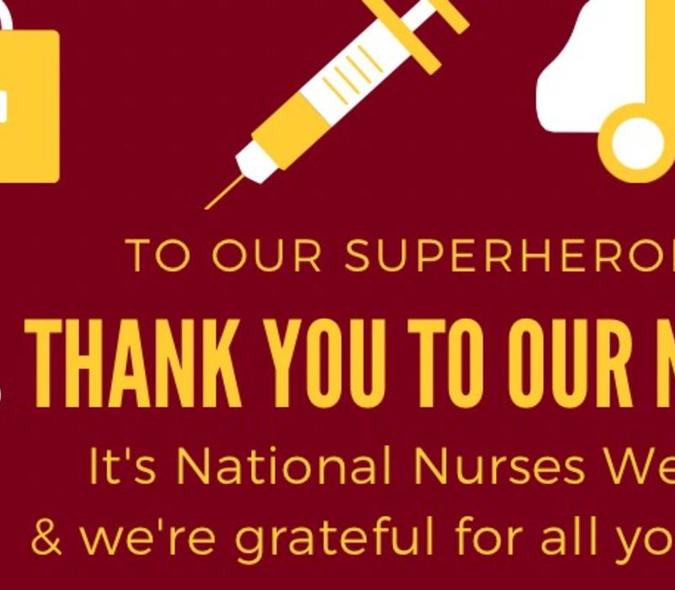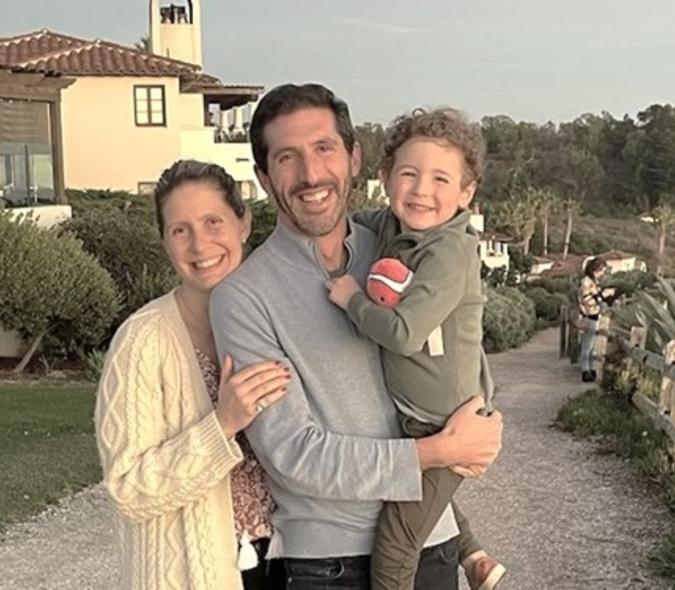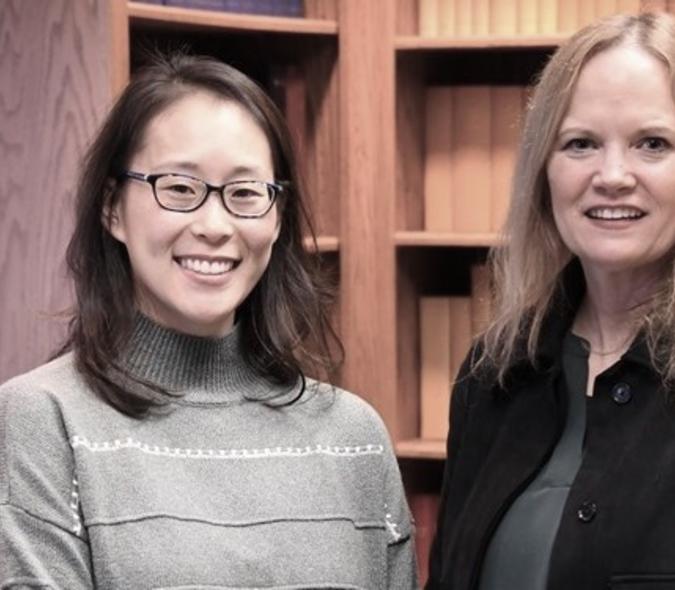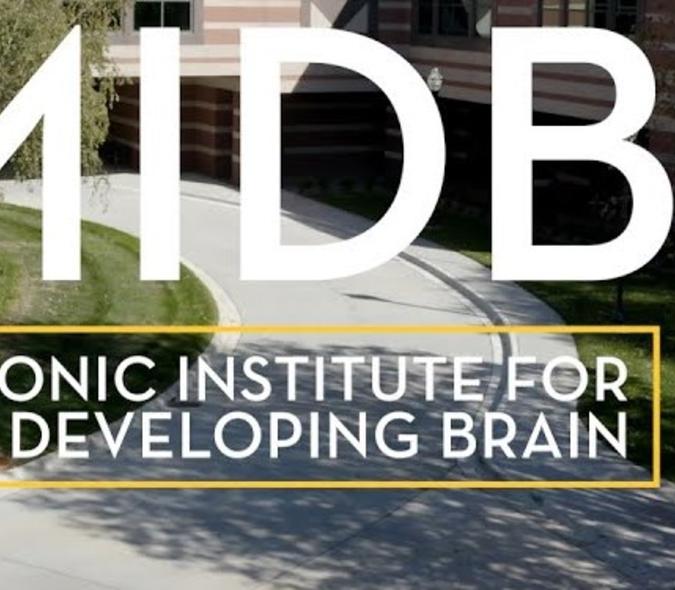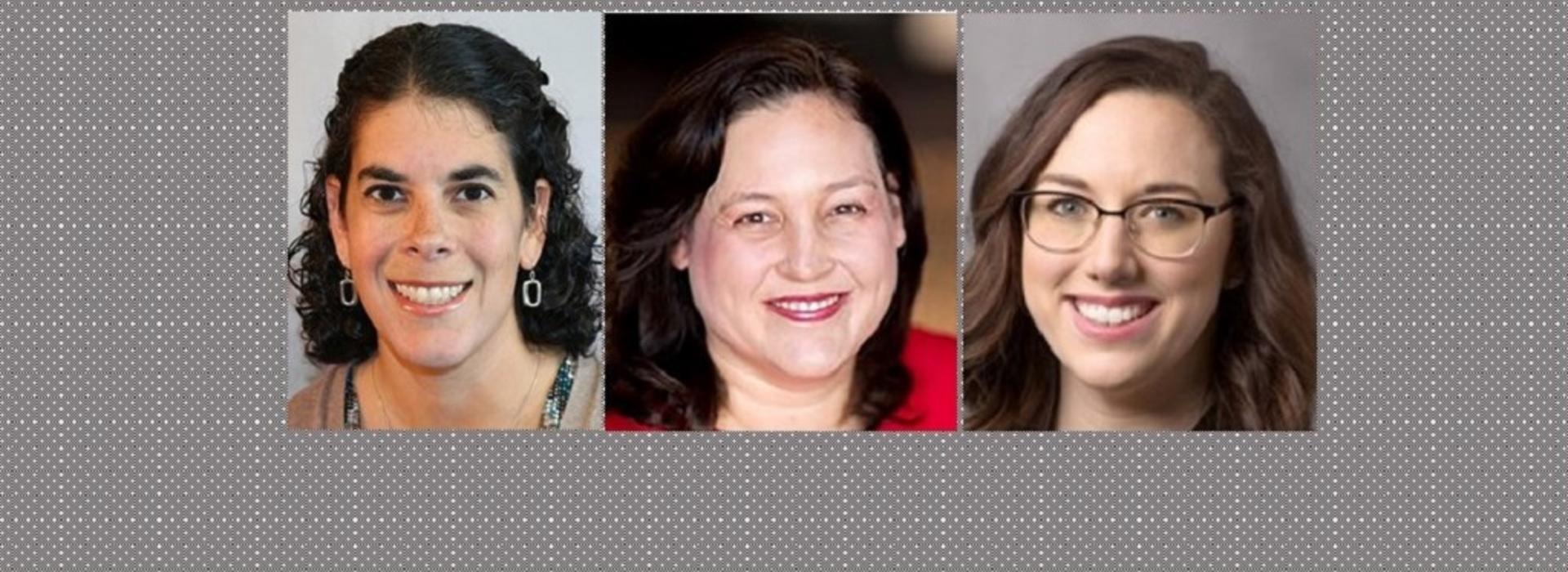
New Inclusive Excellence and Well-Being Council leadership excited to get started
Building on a strong foundation, the Department of Psychiatry and Behavioral Science’s newly created Inclusive Excellence and Well-Being (IEWB) Council is ready to get to work. Under the leadership of Director Katie Lingras (pictured above left), PhD, LP, and Assistant Directors Piper Meyer-Kalos (pictured above center), PhD, LP; and Melissa Dalhoe (pictured above right), MSW, LICSW, the group includes Afshan Anjum, MD, MS; Resident Jonas Attilus, MD (who will have a special emphasis on education); Tess Kean (from the administrative side), Patty Peters-Carlson, LICSW; Lionel Wininger, PhD, LP; Sasha Zagoloff, PhD, LP; and Lidia Zylowska, MD.
Lingras believes the three Council leaders complement each other well. “The idea of inclusive excellence and well-being encompasses several areas,” she said. “A lot of my work has been in diversity, equity, and inclusion. One of the many things that I value about Piper and Melissa is their experience in well-being. This team sets us up well to have eyes on all these areas.”
Carrying the torch
Council leaders have already started working on their short and long-term goals. For the short term, Meyer-Kalos wants to build on the diversity, equity, and inclusion (DEI) work that Lingras and Danielle Vrieze, PhD, LP, started – work that led to the Department being given the Medical School’s Outstanding Unit Award for Equity and Diversity in 2021. “They did a great job of emphasizing diversity and inclusion and used that lens to tackle how we deal with patients, and how we think about recruitment,” said Meyer-Kalos. “They started to add more thoughtful things about education, too. We want to continue to carry that torch forward.”
Dalhoe believes it’s important to look at IEWB initiatives across clinical, research, and academic spaces, both within the organization and in the community the department serves. “How do our goals align with partnerships we have with our community,” she asked. “We also want to make sure there is a voice for both DEI and wellness and that they’re equally supported.”
Lingras agrees. “When we talk about wellness and well-being, we know we’re talking about whether people feel they belong, are valued, and can bring their authentic selves to work,” she said. “That also relates to diversity, equity, and inclusion initiatives, as well as to our mentoring efforts. So, when we tackle any one of these areas, we’re doing work that helps the other efforts, too.”
Defining a new normal
The leadership team is also thinking about when the department comes back together in the post-pandemic world, what its new normal will be. “A big part of our initial DEI work was building relationships and connections to build a foundation for more challenging work and conversations. We did a good job of that, but now – in the immediate term – we need to revisit some of those questions as we think across physical and virtual spaces to rebuild, or even establish for the first time, connections with one another,” said Lingras. “In the long term, we want to continue to pay attention to how to balance the work across all these areas. Overall, the goal is integrating this into everyone’s daily routine – it’s the only way we can sustain it.”
To help do this, Meyer-Kalos is partnered with the Department’s Adult Mental Health Division and Dalhoe with the Child and Adolescent (C&A) Mental Health Division. They’re working with the Divisions to identify their needs and support implementation of identified goals and initiatives.
Another way the Council will meet its goals is through the Department’s Crucial Conversations training. Although not being offered specifically as an initiative of the Council, the internally led training provides a practical guide to having the kind of conversations that support the Council’s work. “Knowing how to have conversations in general is the precursor to knowing how to have difficult conversations about the most hot-button topics, and the skills taught in Crucial Conversations training directly relate to some of the harder IEWB conversations,” said Lingras.
Taking new directions
Some of the exciting things for the new leaders are the directions they would like the Council to take. “We all went through an intense period during the pandemic when so many things changed,” said Meyer-Kalos. “While we may be at a different stage, I want to make sure we keep well-being initiatives on the table and that we’re responding appropriately to the needs of a changing department.”
Dalhoe thinks it will be helpful for the Council to talk about how wellness and DEI intersect. And when she thinks about community connections, Dalhoe would like to form a department Patient and Family Advisory Committee. “It would be valuable for people with lived experience from the community or people from organizations that we work with frequently to meet with us to provide their input about clinical, research, and educational activities,” she said.
Including research
Another area ripe for innovation is research growth and making sure that area is included in IEWB efforts, according to Meyer-Kalos. “As we do our research, we need to be prepared to answer questions related to DEI,” she said. “In my own work, I want to make sure I’m telling the right story at every step – whether you’re setting up a project or analyzing the data.”
While there are many new ideas on the table, Lingras is focused first on doing things that people have asked of the Council already – such as how to make sure that community voices are heard in the department’s research or how to make sure that learners are recruited equitably. “We need to focus on folks’ identities and experiences in addition to their professional and educational experiences,” she said. “We also need to make sure we protect patients, staff, and providers who are bringing their whole selves to their work in our clinics.”
Multiple on-ramps
The group will use events such as the Department’s annual DEI Retreat to identify new concepts for clinical, research, and educational work. “That’s where the innovation is at this stage – figuring out how to bring our ideas and learnings back into the actual day-to-day work,” said Lingras. “We also need to take what we learned during the pandemic about creating varied mechanisms for engaging with this type of material and continue to have multiple on-ramps for folks to connect with the content.”
The trio wasn’t afraid to talk about the elephant in the room – the Council has less diversity than it would like. “We’re all aware of the optics,” said Meyer-Kalos. “Being aware forces us to look at ways to be more inclusive. We also need to recognize that not all the DEI work should be left up to people from diverse backgrounds. The majority needs to contribute.” Lingras added that everyone on the Council has raised this point, and multiple individuals have specifically told her that if someone who is more representative wants to join, they will step back and let them take their place at the table.
Front-row seat
“We had a front-row seat to the importance and urgency of this work after George Floyd’s murder in 2020,” said Meyer-Kalos. “We saw the benefits of it even before that. I see it in the faculty we’ve brought on, in the residents we’ve brought in, in the projects we’re taking on, and the questions being asked.”
Lingras is excited to be collaborating with such a dedicated, passionate group of people. The trio looks forward to leading the IEWB Council with, as Meyer-Kalos put it, “a great deal of curiosity, a big dose of collaboration, and a willingness to do the work.”
